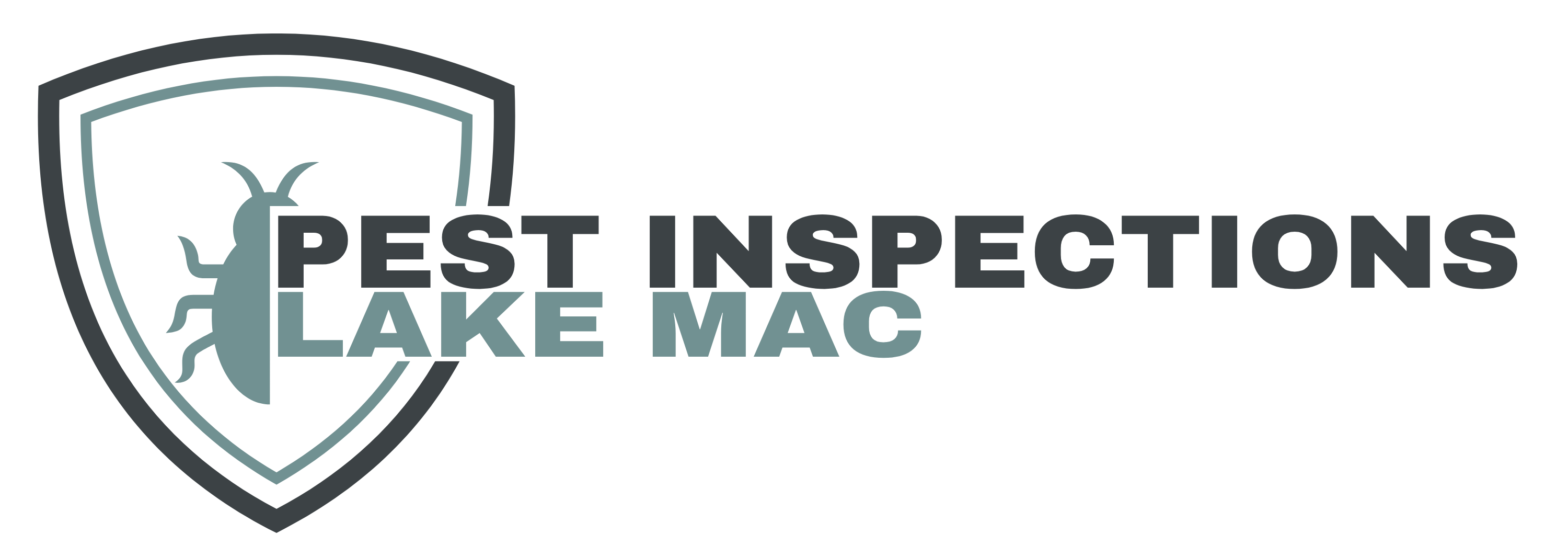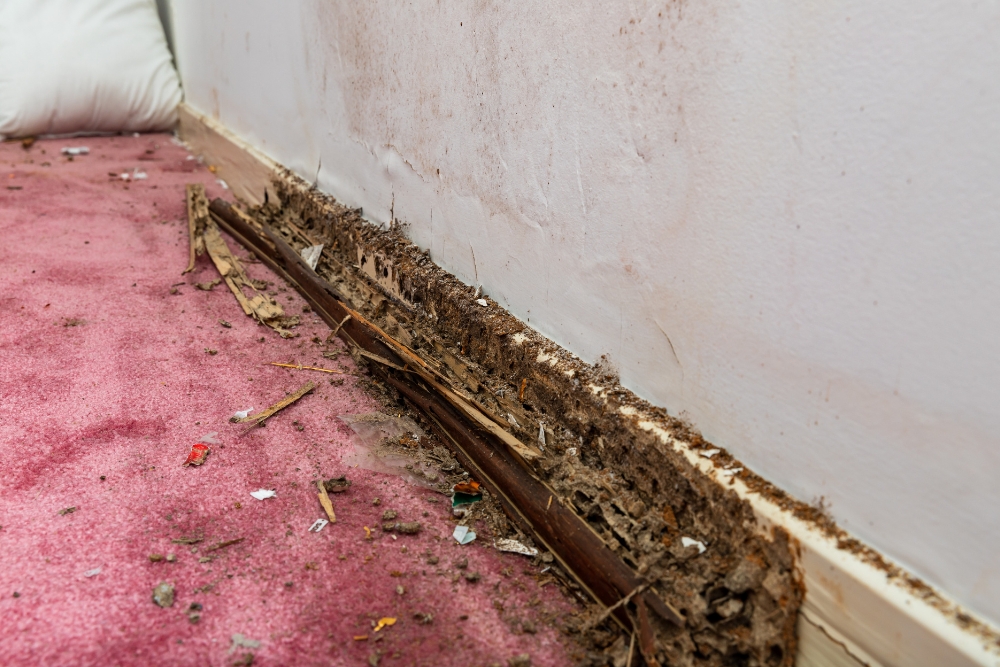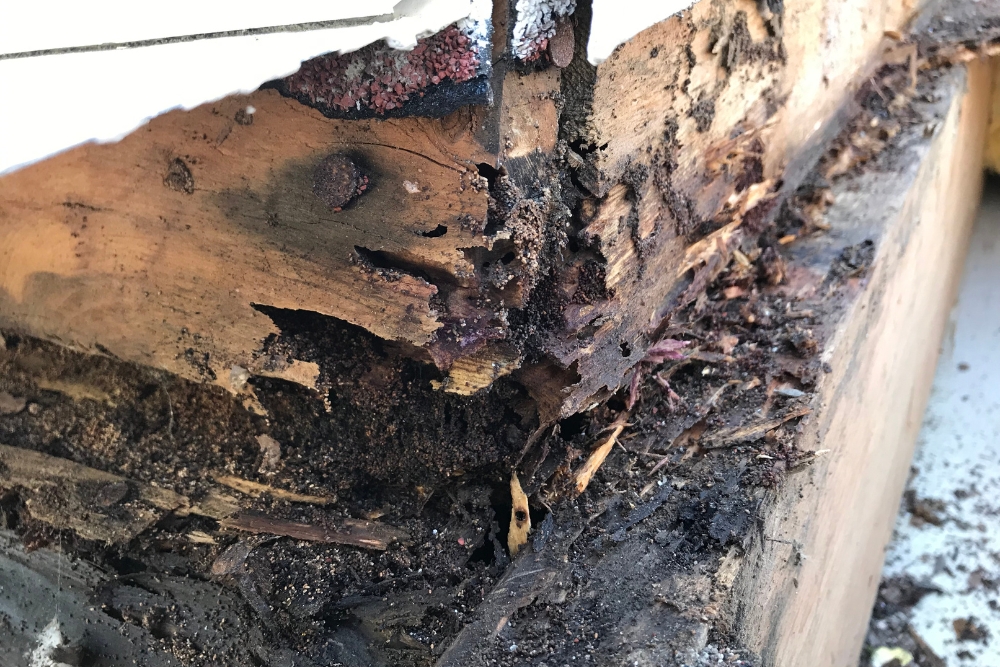Detecting bed bugs during inspections presents a significant challenge, a task akin to searching for experts in hide and seek. These tiny pests, known for their sneakiness, choose hiding spots so cleverly concealed that finding them requires more than just a casual look.
Behind baseboards, deep within mattress seams, or any nook small enough to keep them hidden – these are the places where bed bugs thrive unnoticed. The complexity of their life cycle further complicates detection efforts. With five stages from egg to adult and females laying hundreds of eggs, infestations can swiftly spiral out of control if not caught early.
Inspectors arm themselves with flashlights and other tools to uncover signs of these elusive creatures but often find that chemical treatments are necessary to eradicate them—a measure best left to professionals equipped with the right knowledge.
Preventative measures include regular checks of common bed bug hotspots, using protective covers on mattresses, and maintaining clutter-free spaces to deter habitation. Yet when prevention falls short and an infestation takes root, professional pest control services stand ready with the expertise and equipment needed to decimate bed bug populations effectively.
This battle against undercover pests underscores the critical importance of awareness and vigilance in preserving our homes as sanctuaries free from unwanted invaders. Get ready; there’s much more we need to talk about.
Key Takeaways
- Bed bugs hide in sneaky spots like behind baseboards and mattress seams, making them hard to spot during inspections.
- They go through five stages in their life cycle, from egg to adult, and females lay hundreds of eggs. This means infestations can grow quickly without early detection.
- Inspectors use tools like flashlights to look for signs of bed bugs and might need chemical treatments to fully get rid of them. However, these chemicals should only be used by folks who know what they’re doing.
- Regularly checking places where bed bugs love to hide, using protective covers on mattresses, and keeping spaces clutter-free are good ways to prevent these pests from taking over.
- If you find yourself up against a serious bed bug problem, professional pest control services have the right skills and tools to kick those pesky critters out for good.
Why Detecting Bed Bugs is Challenging During Inspections
Detecting bed bugs during inspections is a complex task, largely due to their adeptness at hiding in various nooks and crannies, from mattress seams to electrical outlets, and their ability to remain undetected across different stages of their life cycle. These pests exhibit remarkable concealment habits, burrowing into the smallest of spaces, which necessitates a meticulous and thorough examination by inspectors to ensure no area is overlooked.
To tackle this challenge, professionals often employ a combination of visual inspection techniques, augmented by chemical detection methods such as bed bug lures or CO2 traps, to uncover these elusive pests.
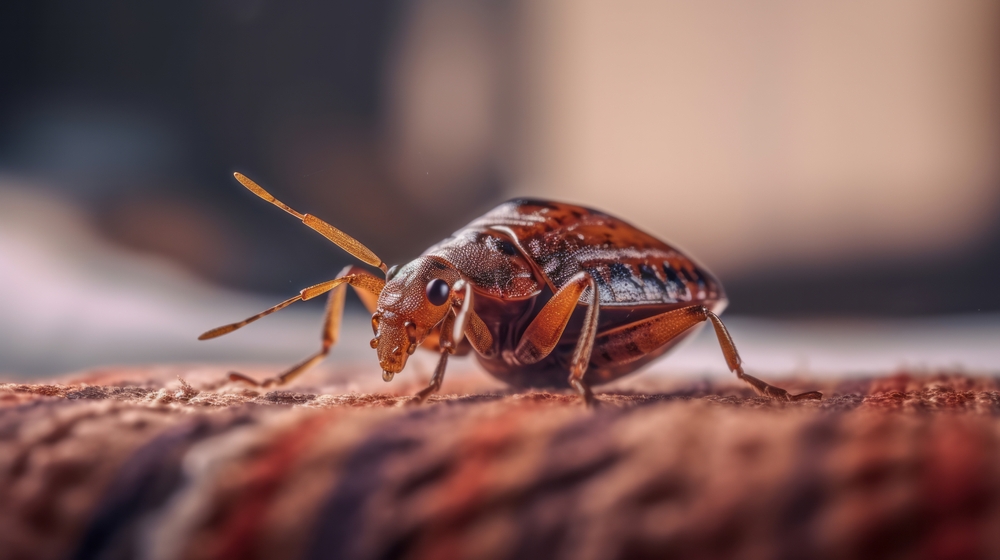
This dual approach significantly enhances the likelihood of identifying both adult bed bugs and their harder-to-spot eggs. The complexity of the inspection process underscores the need for expertise and patience, as finding and effectively addressing bed bug infestations requires a keen eye and knowledge of their behavioural patterns.
The life cycle of bed bugs
Bed bugs go through a five-stage lifecycle, starting as tiny eggs before becoming full-grown adults. Females lay one to five eggs each day, which adds up to hundreds over their lifetime.
These eggs hatch into nymphs, which need a blood meal to grow. They shed their skin five times before reaching adulthood. This process can take from several weeks to months, depending on conditions like temperature and access to food.
Knowing about this cycle helps us understand why infestations aren’t always caught early. Nymphs are so small they’re often missed during inspections. Adults can live for months without feeding, hiding away in furniture and cracks until conditions are right for them to emerge again.
Next up, we’ll discuss where these pests hide and the challenge of spotting them during an inspection.
Concealment and hiding places
Bed bugs often hide in hard-to-reach areas to avoid detection. They can be found behind baseboards, electrical outlets, and picture frames. Mattresses, box springs, and furniture provide excellent hiding spots for these pests as well.
Inspectors should diligently search for bed bugs in crevices and seams of mattresses and upholstered furniture using a flashlight. It is crucial to thoroughly inspect all potential hiding places during an inspection to effectively detect bed bug infestations.
Visual and chemical detection methods
Visual and chemical detection methods play a crucial role in identifying bed bug infestations. Inspectors can use a flashlight to examine common hiding spots such as mattress seams, bed frames, and furniture crevices.
Look for reddish-brown stains or live bugs during the inspection process. Additionally, chemical detection involves using pesticides labelled specifically for bed bug control to treat infested areas effectively.
Inspectors must carefully inspect all potential hiding places using a flashlight to identify any signs of infestation within mattresses, furniture seams, and other common hiding spots.
Signs and Symptoms of Bed Bug Infestation
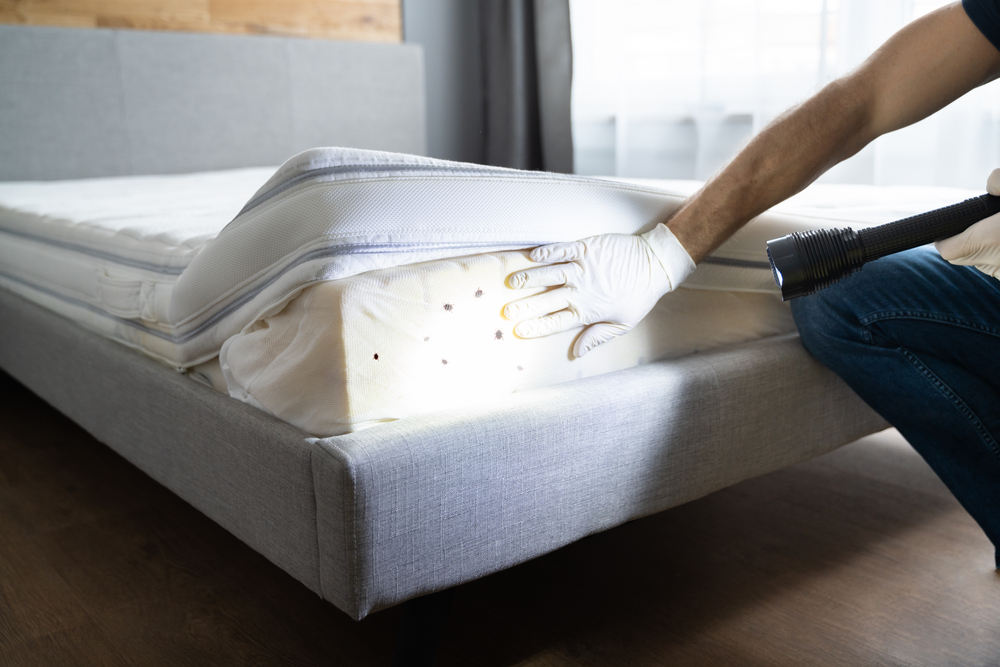
Bed bug infestations often first come to light through the skin reactions and bites they leave on humans, which usually appear as small, red, and itchy welts in a line or cluster. These symptoms serve as an initial alarm, prompting a more thorough inspection of furniture, mattresses, and bedding where these pests are most likely to hide.
Bed bugs are notorious for their ability to conceal themselves within various environments, not just within the seams of mattresses but also in cracks and crevices of bed frames, behind wallpaper, and even in electrical outlets.
This adeptness at hiding makes detailed inspections crucial for uncovering their presence and assessing the extent of an infestation.
Understanding their secretive nature and the common signs of their activity is key to effectively identifying and subsequently eliminating bed bug infestations, underlining the importance of vigilance and prompt action at the first signs of bites or skin reactions.
Bites and skin reactions
Bites from bed bugs can cause red, itchy welts on the skin. These bites are often found in clusters or a line pattern and may lead to irritation and discomfort. In some cases, individuals may not react to bed bug bites at all, making it challenging to identify an infestation based solely on skin reactions.
Inspectors should be vigilant for signs of these bites during inspections of furniture and mattresses where bed bugs tend to hide. By closely observing any skin reactions in conjunction with other indicators such as fecal stains or shed skin, inspectors can better assess the presence of bed bugs in a given area.
Furniture and mattress inspection
When inspecting for bed bugs, it’s essential to thoroughly examine all furniture and mattresses. This involves checking seams, crevices, and underneath the fabric for any signs of bed bug activity. Here are strategies to consider during furniture and mattress inspection:
- Use a flashlight to closely inspect seams, tufts, and edges of upholstered furniture and mattresses.
- Look for live bed bugs, shed skins, eggs, or dark spots that indicate bed bug excrement.
- Remove drawers from dressers and bedside tables to inspect the interior and runners for any signs of infestation.
- Pay attention to hidden areas like behind picture frames or loose wallpaper where bed bugs may hide.
- Use a credit card or similar tool to run along mattress seams for easy detection of bed bug harborage.
It is advisable to take a methodical approach when conducting these inspections to identify any potential infestations early on.
Tips for Successful Bed Bug Inspections
Successfully inspecting for bed bugs requires employing meticulous and thorough techniques, given the pests’ adeptness at hiding in the smallest of spaces.
Considering the challenge of detecting these elusive creatures, enlisting the help of professional pest control services often becomes necessary.
These experts come equipped with specialised tools and possess the keen eye needed to uncover even the most well-concealed bed bugs and their eggs.
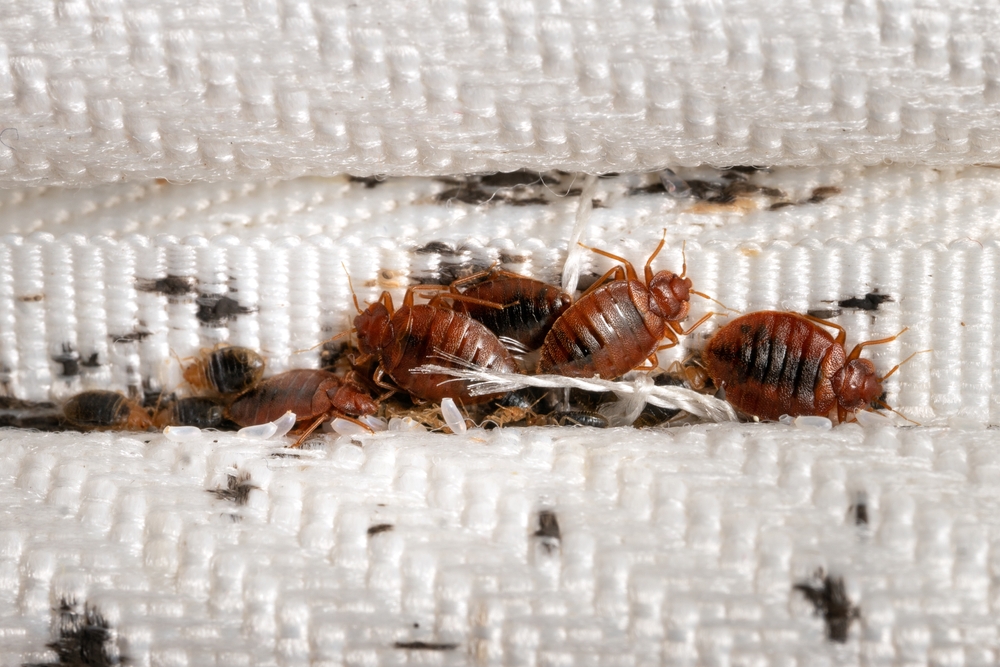
Alongside professional interventions, incorporating effective home remedies and prevention strategies, such as regularly washing and heat-drying bed linens, vacuuming, and sealing cracks and crevices, can significantly reduce the likelihood of bed bug infestations.
Ultimately, a combination of professional inspection and diligent home maintenance serves as the best approach to keeping your living spaces free from bed bugs, safeguarding the comfort and health of your home.
Thorough inspection techniques
Thorough inspection techniques are essential to detect bed bugs during inspections. Here are some methods to enhance the effectiveness of inspections:
- Use a flashlight and magnifying glass for close examination.
- Focus on seams, tufts, and edges of mattresses and upholstered furniture.
- Inspect electrical outlets, picture frames, and baseboards for signs of bed bug activity.
- Employ a professional pest control service for comprehensive inspections using trained dogs or advanced detection equipment.
- Conduct regular follow-up inspections after initial treatment to ensure the complete elimination of bed bugs.
By following these thorough inspection techniques, homeowners, building inspectors, and pest inspectors can effectively identify and eliminate bed bug infestations.
Use of professional pest control services
When it comes to managing pest infestations effectively, professional pest control services play a crucial role in addressing the challenges posed by bed bug detection and elimination.
Pest control experts are equipped with the necessary tools and knowledge to conduct thorough inspections, identify infestation hotspots, and develop tailored pest management plans. Leveraging their expertise can help homeowners and building inspectors navigate the complexities of infestation control while ensuring effective bug elimination.
Pest extermination professionals bring a wealth of experience in pest identification, concealment detection, and eradication techniques, offering targeted solutions for insect infestations.
Home remedies and prevention strategies
Inspectors and homeowners can utilise home remedies to combat bed bug infestations. Regularly vacuuming furniture, mattresses, and carpets, followed by immediate disposal of the vacuum bag in an outdoor bin, can efficiently remove live bugs and eggs.
Encasing mattresses with bed bug-proof covers creates a barrier against infestation as it prevents bugs from hiding in mattress seams or crevices. In addition, frequent washing and drying of bedding at high temperatures can eliminate any potential bed bugs.
Pest inspectors often recommend prevention strategies to hinder bed bug presence within homes. Ensuring clutter-free spaces minimises potential hiding spots for these pests while routine inspections of second-hand furniture before bringing it inside are crucial to avoid unintentional infestations.
Eliminating Bed Bugs
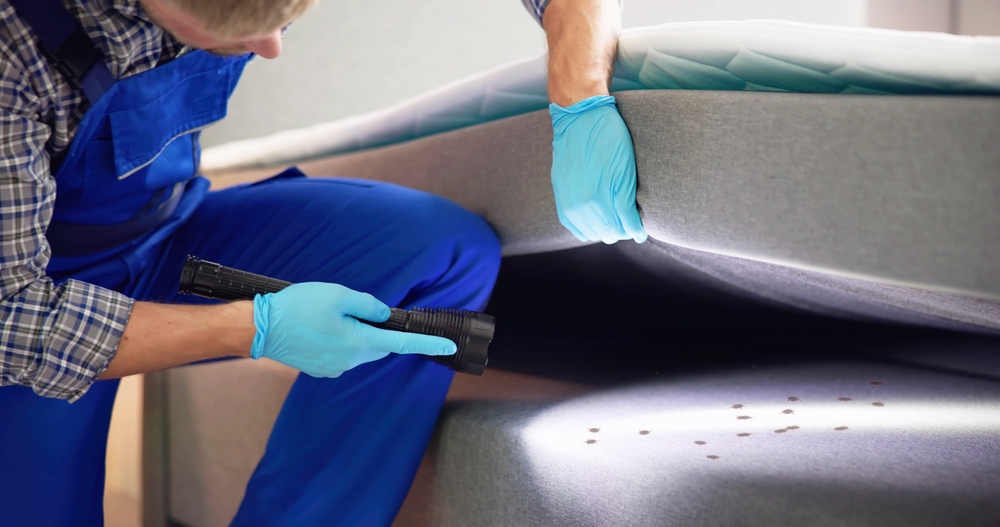
Eliminating bed bugs often requires a multifaceted approach, with chemical treatments being a common tactic. These chemicals, which should be handled with care, can effectively target infested areas, killing bed bugs on contact.
Alternatively, implementing heat treatments, which involve raising the temperature of affected areas to a level that is lethal to bed bugs, has proven to be an effective method without the use of chemicals.
Cold treatments, similarly, utilise extreme cold to eradicate these pests, although this method may be less accessible for general use. Due to the resilience and ability of bed bugs to hide, seeking professional pest control services is highly recommended for the most effective and thorough eradication, ensuring all hidden bed bugs and their eggs are eliminated.
Chemical treatments
Chemical treatments play a vital role in eliminating bed bugs. Professional pest control services use pesticides that are specifically designed to target and eradicate these stealthy pests.
These treatments involve carefully applying the chemicals to areas where bed bugs hide, such as cracks, crevices, and furniture seams. Pest inspectors can effectively deploy chemical treatments to eliminate bed bug infestations from homes and buildings, ensuring thorough eradication of these resilient pests.
Bed bug extermination often involves tailored chemical treatments that are meticulously applied by skilled professionals. This strategic approach ensures the effective elimination of these persistent pests while minimising any potential harm to residents or occupants.
Heat and cold methods
Transitioning from chemical treatments to heat and cold methods, it’s crucial to consider the effectiveness of alternative pest elimination techniques. Heat treatment involves exposing infested areas to high temperatures that are lethal for bed bugs, whilst cold treatment uses freezing temperatures to eliminate these pests.
Heat treatment rapidly penetrates furniture, mattresses, and other hiding places where bed bugs dwell, eradicating them at all life stages. On the other hand, cold treatment utilises extremely low temperatures to freeze and kill bed bugs within a few days.
These methods offer non-chemical options with promising results in eliminating these stubborn pests.
Physical removal
When eliminating bed bugs, consider physically removing them by vacuuming infested areas thoroughly. Use a high-powered vacuum with a disposable bag and ensure all bed bug life stages are captured, including eggs.
After vacuuming, immediately seal and dispose of the bag in an outdoor bin to prevent any escape or re-infestation. It’s crucial to also wash infested items such as bedding, clothing, and curtains in hot water followed by drying at a high temperature for at least 30 minutes.
These steps can effectively aid in reducing the bed bug population in your home or property.
Call Us!
Successfully detecting and eliminating bed bugs during inspections is essential for ensuring a pest-free environment. Thorough visual and chemical detection methods, coupled with recognising signs of infestation, are crucial for effective inspection procedures.
Implementing professional pest control services and employing practical prevention strategies can lead to significant improvements in eradicating these pesky pests. By understanding the challenges associated with detecting bed bugs, homeowners, building inspectors, and pest inspectors can efficiently navigate the complexities of bug infestation assessment.
This approach underpins the importance of tailored strategies towards successful examination and eradication within the ever-evolving realm of pest inspections.
